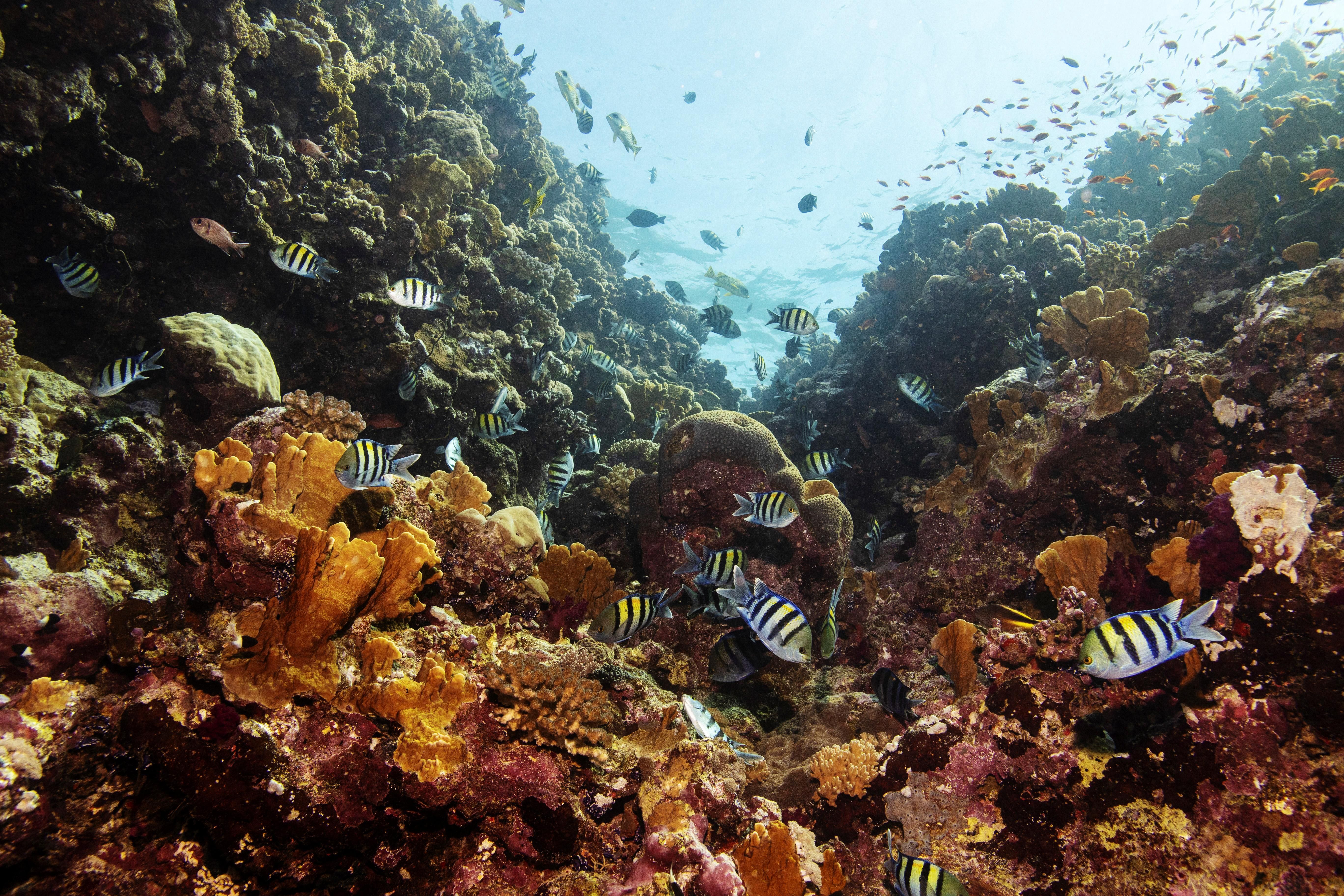April 23, 2021
Rising sea temperatures are "the greatest hidden challenge of our generation," revealed a 2016 climate report. Small Island Developing States (SIDS) like the Maldives, as well as those in the Caribbean and elsewhere in the Pacific are particularly vulnerable to the impacts of climate change on oceans and extreme weather patterns. But how much power do these nations actually have to address the mounting problems?
Disproportionate burden. Despite accounting for a small amount of global carbon emissions, small island developing states are on the front lines of the climate crisis, facing unique challenges as a result of climate-induced ocean warming and rising sea levels. Consider that most of the Bahamas is expected to be underwater by 2050, while the entire Maldives could be submerged by the end of the century.
At the same time, current trends threaten marine life (coral reefs, algae, turtles, fish) that sustain many of these island communities. Take the tuna trade, for example. Degradation of the ocean could reduce annual tuna catch in the Pacific by 10 percent over the next three decades, analysts say. This is a massive problem for islands like the Marshall Islands, where agriculture and fishing accounts for over 15 percent of GDP.
What are these islands doing about it? Ocean states like the Maldives have been pushing for global action to reduce greenhouse gas emissions that have led to more destructive weather events (cyclones, hurricanes) in recent decades. They have also been the driving force behind the inclusion of targets in the Sustainable Development Goals 2030 agenda designed to "conserve and sustainably use the oceans, seas and marine resources for sustainable development." To date, 97 countries have signed onto a binding international agreement on sustainable fishing.
On issues of marine life preservation, many island nations have been batting above their weight, closing off marine protected areas to preserve Earth's biggest ecosystem and protect the economic interests of their communities. For Grenada, an island of 112,000 people in the Caribbean, protecting essential marine life habitats has sought to raise the productivity of lucrative (fish) products.
But these initiatives could prove futile if top emitters don't limit their global greenhouse gas emissions — fast. Together, China and the US account for roughly 40 percent of global emissions. Chinese and Indian emissions, particularly from coal, remain the single most lethal threat to the climate, according to Eurasia Group's Gerry Butts.
While these countries have pledged to reduce their carbon output in the medium term, massive gaps persist. President Xi Jinping has not outlined a solid blueprint for how China plans to get to Net Zero by 2060. Meanwhile, India, the world's third largest emitter of carbon dioxide, is embroiled in a back-and-forth with rich nations in North America and the EU about whether the latter should spend more on helping developing countries realize their climate action plans with less stringent requirements.
Sharing the load. While small island developing states are particularly vulnerable to many of the problems caused by the warming climate, it is clear that these nations, with tight purse strings and limited resources, cannot go it alone as sea temperatures reach their highest levels in a million years. Since they are largely at the mercy of large economies responsible for the vast amount of damage, the only solution is a global one.
More For You
In this episode of Tools and Weapons, Microsoft Vice Chair and President Brad Smith sits down with Ed Policy, President and CEO of the Green Bay Packers, to discuss how purpose-driven leadership and innovation are shaping the future of one of the world’s most iconic sports franchises. Ed shares how technology and community-focused initiatives, from Titletown Tech to health and safety innovations on the field, are transforming not just the game of football, but the economy and culture of Green Bay itself. He explains how combining strategic vision with investment in local startups is keeping talent in the Midwest and creating opportunities that extend far beyond Lambeau Field.
Subscribe and find new episodes monthly, wherever you listen to podcasts.
Most Popular
Egyptians head to the polls to elect a new parliament during the first round of the Egyptian parliamentary elections in Giza, Egypt, on November 10, 2025.
Photo by Islam Safwat/NurPhoto
Egyptians are voting this month in parliamentary elections that aren’t expected to change who’s in charge, but could allow President Abdel Fattah el-Sisi to rule beyond 2030.
An injured soldier is transferred to a hospital following a clash between Thai and Cambodian troops over a disputed border area in Sisaket Province,Thailand, December 7, 2025.
Royal Thai Army/Handout via REUTERS
Thailand and Cambodia’s ceasefire is on the verge of collapse. Strikes were launched across their disputed border today, following clashes over the weekend that resulted in the death of a Thai soldier.
© 2025 GZERO Media. All Rights Reserved | A Eurasia Group media company.
